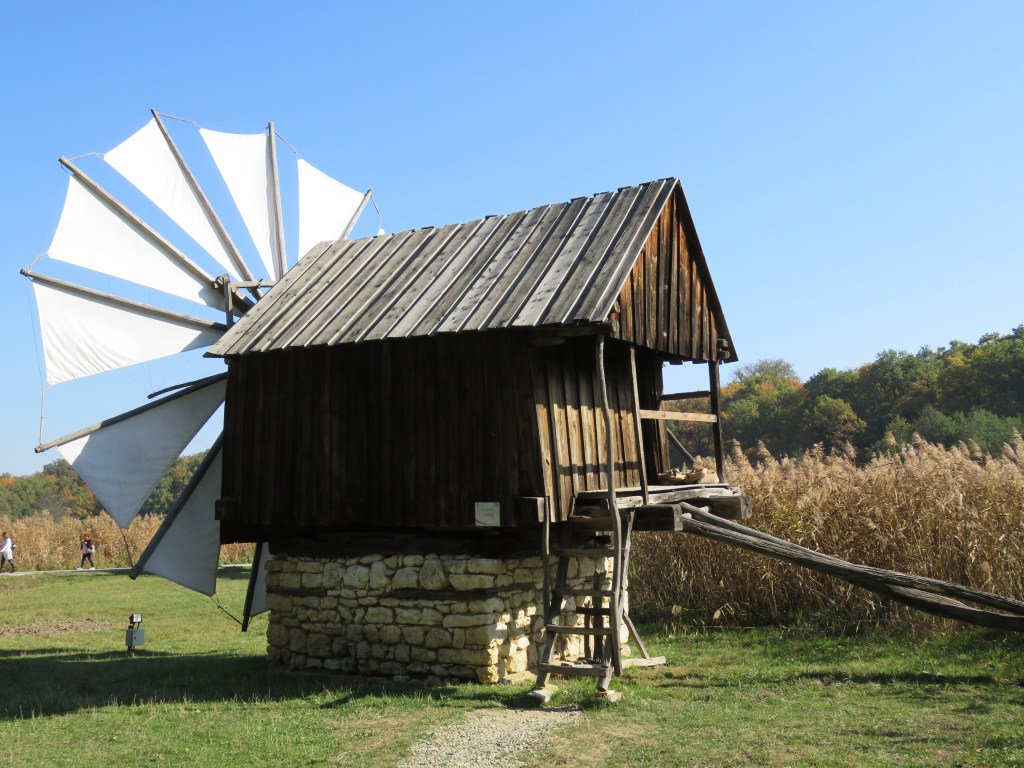
Call them Living History, Open-Air, or Folk Museums – I love them all. I find them fascinating, and they’re like a magnet when I travel. I’ve visited Skansen in Sweden, the Openlucht in the Netherlands, the Astra National Museum outside Sibiu, Romania, and closer to home, Colonial Williamsburg in Virginia.
Up until recently, I’ve never really thought much about why I find them so appealing. I didn’t grow up on a farm, nor am I one of those city slickers who pines for the country life. But on our recent RTW trip, I finally put my finger on the reasons.
First, no matter where people lived, they had a common set of needs – and came up with unique and ingenious ways to meet those needs.
Second, the daily struggle to survive forced them to work with nature and not against it.
Finally, they lived simply and their projects were completed with an economy of effort

One of my favorite places to see these techniques in action was The Astra Museum of Traditional Folk Civilization just outside Sibiu, Romania. Billed as the the largest folk museum in Europe, its collection of over 400 traditional structures showcases “pre-industrial peasant technologies.” The museum sits in a lush forested area with small lakes, meadows, and peaceful paths meandering through the extensive collection of houses, barns, sheds, windmills, and tranquil duck ponds.

The homes on display were simple, cozy affairs that kept the rain, wind, and forest animals out … and the heat in. There was certainly no shortage of family togetherness in the 19th century because the main room was where all the cooking, eating, sleeping, and socializing took place. Utility was all-important, but colorful woven tapestries brightened up those long nights indoors.
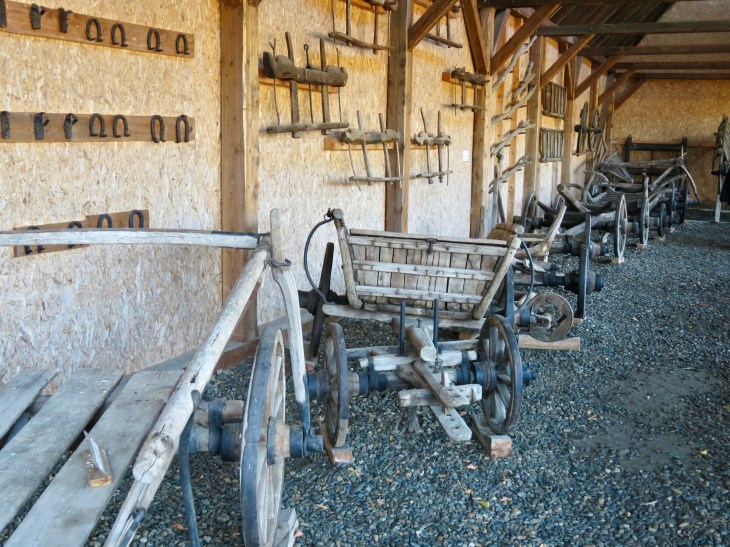


And because everything was handmade, it was important to work smarter, not harder. One of the barns showed a wagon base which is an excellent example of the economy of effort that I spoke of earlier. How smart was it to search out curved branches for this wagon base instead of carving and piecing together straight pieces? Nature does the hard work, and that’s the starting point for the design. I had to smile at the ingenuity.
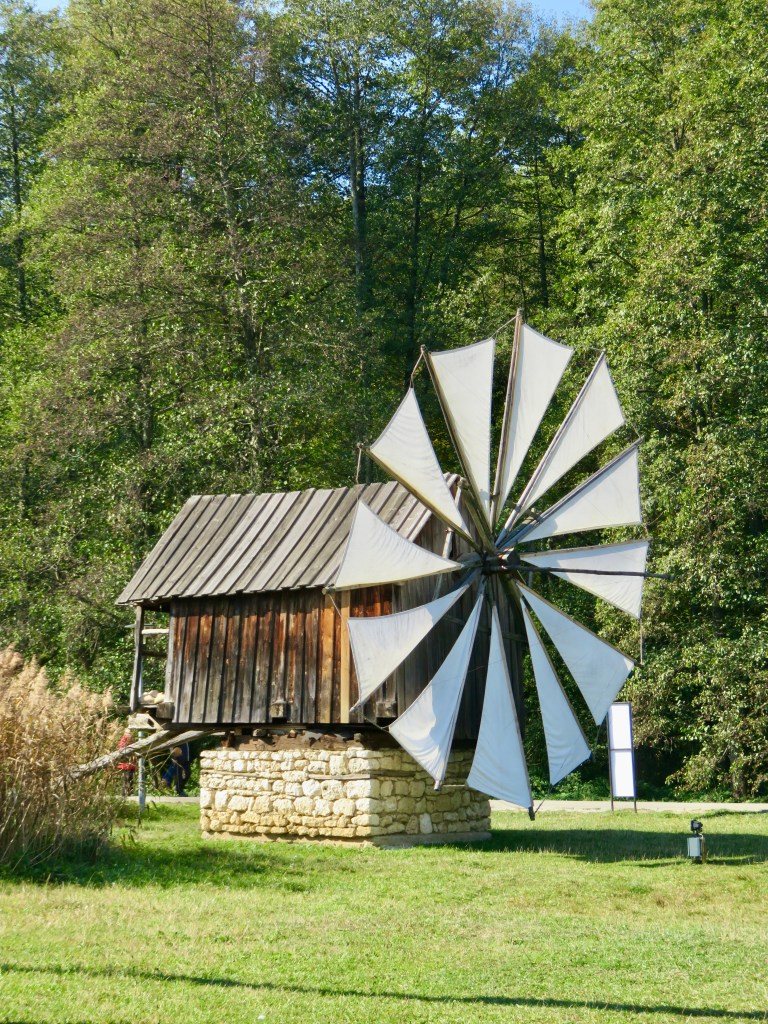
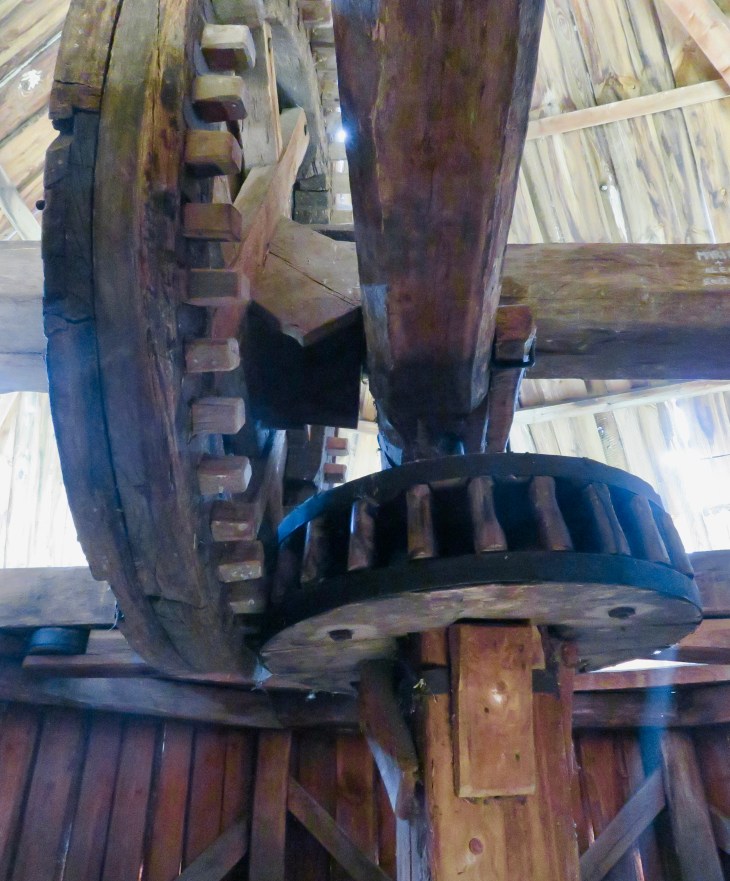
The 19th Century wind and water mills in the park were used for grinding grain and powering forges. These mills made Mother Nature an effective work partner, and this primitive technology was prevalent all over Europe at the time.


But The Astra Museum had a new and unusual twist on the mill that I hadn’t seen before: a floating watermill. This cleverly designed mill could be moved to take best advantage of changing water levels and currents.
One of my teenage moneymaking gigs was seasonal farm work, so living museums like The Astra are nostalgia for sure. But for me they’re much more. Throughout the ages, from the time when the first hunter-gatherers decided to settle down, farmers have struggled to survive. The life is never easy and it takes hard work, a willingness to take risks, and above all creativity.


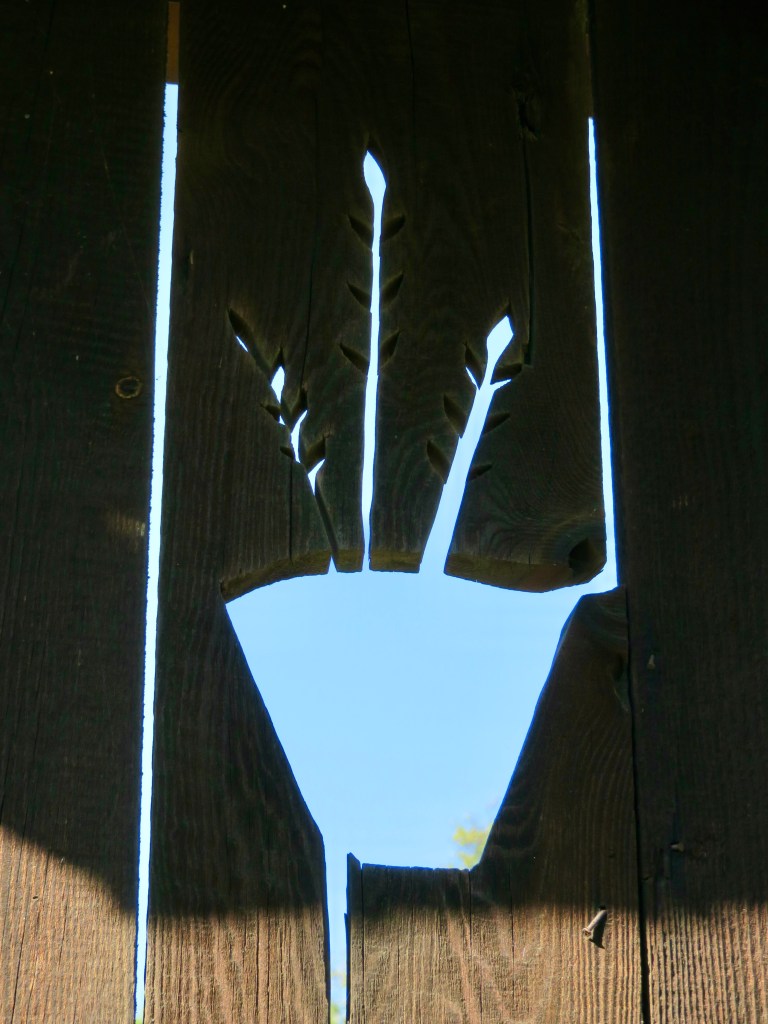
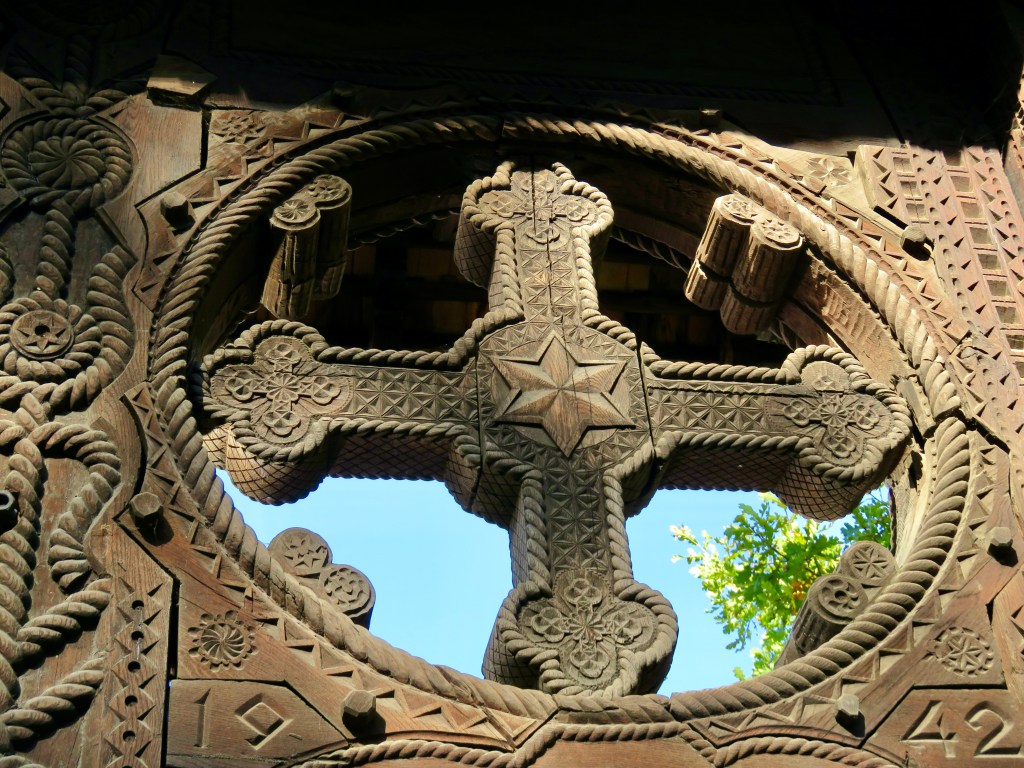


These museums are a slice of life in a simpler time, a showcase for the resourcefulness of common people, and a window into culture. You don’t have to travel to Romania to see one, but wherever you might be, don’t miss a chance to take a pleasant walk back in time at the closest open-air museum.
Happy Trails,
James & Terri

Photo Credits: 2. Ramona Delia
I love visiting places like this because not only do they give a glimpse into the past, but they (especially those where people still actually live in) also teach us a thing or two about simple living — something many of us aspire to do in this fast-paced world.
Bama I think most of us eventually get to the point of wishing for a simpler life. I know we’ve gone through the process, and it’s made a big difference for us. Most simplifiers agree that in American the popularity of the trend goes back to Henry David Thoreau and his mid-19th Century book “Walden.” In the summer in America many of these museums have staff in period costumes who demonstrate crafts from the time, which is also very cool. ~James
We’ve been to quite a few outdoor museums. They’re always fascinating.
Peggy, I know when we travel I always have my folk-museum radar on, so we visit every one we can get close to. They’re particularly fun and educational in summer when the staff does craft demonstrations. ~James
We even had a great winter visit in Iceland.
I once read that most of the history we know is really the tales of a few people, mostly of monarchs and warriors, maybe of a few scientists and artists here and there. Most of the “folk” we rarely hear about, and these marvelous folk museums offer a glimpse to the history of life of, well, most of humanity?
A valid point for sure, and to that I would add that the victors write the history of wars. Lately, I’ve read a couple of books on “what life was really like in the Middle Ages,” and they were informative to say the least. Not only from the standpoint of how different groups on the social ladder lived day-to-day, but what the laws were at the time and what different groups were and were not allowed to do. It confirmed what we all knew, which is that even then it was best to be in the 1%. The other 99% just made it as best they could. ~James
Open-air museums are indeed interesting, James. Romania’s Astra Museum looks especially authentic and well-preserved. I especially marvel at the human ingenuity, such as the floating watermill. We are thinking of shifting our travel focus to the Balkans in the near future, and will hope to visit Sibiu and Astra for ourselves someday. Thanks for the sneak-peak!
Joe, I’m sure you’ll enjoy this part of Europe. Both Romania and Bulgaria have a very different feel than the rest of Europe, and there’s the post-Russian influences added to the mix. In addition to Sibiu, you might want to add the old-fortified hill towns of Sighisoara and Brasov to your list. They have wonderful historic areas, and FYI, Sighisoara is where Vlad Tepes, aka Vlad the Impaler, aka Count Dracula, was born. We even saw the house!! ~James
Wonderful recommendations, James! I knew that Transylvania was part of Romania, but now I know where to look for the Count, thanks to you.
I love these types of museums as well. It certainly provides a glimpse into what life was really like back then. This one looks fascinating.
Darlene, my grandparents all lived on farms, and I remember the winter visits with their woodstove heat and freezing cold upstairs bedrooms. That’s the part of the “simple life” I’m not too enthusiastic about. But the warm summers, porch swing, and dusty old barn smells are just fine for me. ~James
I agree James and Terri. What they provide for me is a shift away from the history that normally focuses on major events and leaders to the everyday life of the common people. We visited one in the Black Forest on our trip up the Rhine last year that was very interesting. It also featured one of my favorite animals: Donkeys. BTW, we are now camped about 10 miles away from Williamsburg. –Curt
Curt, we lived in Richmond so with guests we visited Williamsburg many times. Of course it’s more “polished “ than some of the others we’ve seen, but interesting nonetheless. The crowds can be an issue in summer but if you can visit when it’s quiet it’s very neat. Christmas there is very cool. ~ James
What is the tall woven structure in the top row middle of that 6-photo grid? I like this small type of open-air museum, especially a foreign one with different designs and colors than I’m used to. Very fun.
Lexie, we’re not totally certain as the sign was in Romanian (and we didn’t google) however, a guess would be that it’s some sort of hay holder for feeding small livestock. Someone spent a good deal of time weaving all those reeds, and it must have been a neat trick to get it tapering to the bottom and still able to stand upright. I’ve never seen anything like it.
The walk into this museum had added excitement because our bus dropped us off about a mile from the gate, and on the walk in we saw a roadside sign warning about bears in the surrounding forest. We didn’t understand all the words, but the photo of a snarling bear got the message across. We walked a bit faster after that. ~James
Beautiful! We visited the open air museum in Bucharest and it was the highlight of our visit. I agree that these places are fascinating and a joy to explore.
Hannah, we passed through Bucharest, and for some reason didn’t discover the museum. If it was the highlight of your trip, I’m really sorry we missed it. ~James
Yes, they are a fascinating time portal. I am not so sure I would want to actually live in those worlds, but they do offer the notion of a more ‘in tune’ alternative to exclusive modernity. No har in taking a walk on the wild side.
Shane, I’m with you on not living this life. I love the idea of simplicity and the inventiveness of these ancestors, but I’ll keep my tech, medical, and do my gardening at the local supermarket. But to appreciate where we are it helps to recognize where we’ve been, and these museums give us a chance to do just that. ~James